Monsoon! Rains!
Come May, everyone eagerly waits for the press release by the meteorological department with predictions for the monsoon. The date of arrival, distribution patterns, etc., all hold interest to the people of our country. This helps the entire country, particularly the agrarian populace, to gear up for the good times that rains bring with them and that with plenty of hope.
Across the subcontinent, plants and animals, man and beast, organisms big and small, all wait for the rains that soak the earth. They have all managed to survive the harsh summer and are now looking forward to the showers that give respite from the heat.
Trees, exhausted after producing flowers and seeds, busy themselves with the onset of the monsoon. They now produce new leaves, shoots and branches whereby they cover the landscape with a green cloak. Various other organisms that were lying in wait for favorable conditions make an appearance too – all trying to make the most of the short period of plenty. Our jungles too quickly don a green garb and look very vibrant.
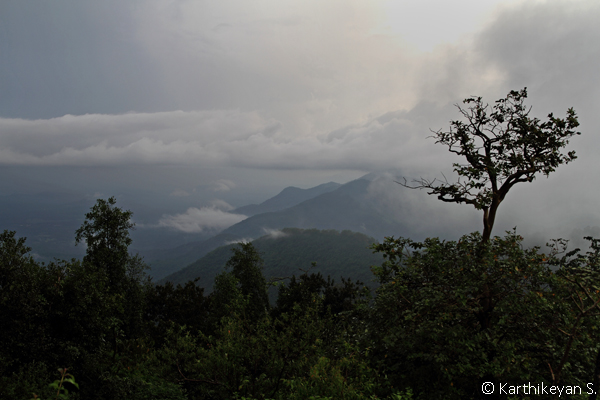
As you walk through the forest, some things catch your attention. But one that you may notice only after you have come out of the forest are the leeches!
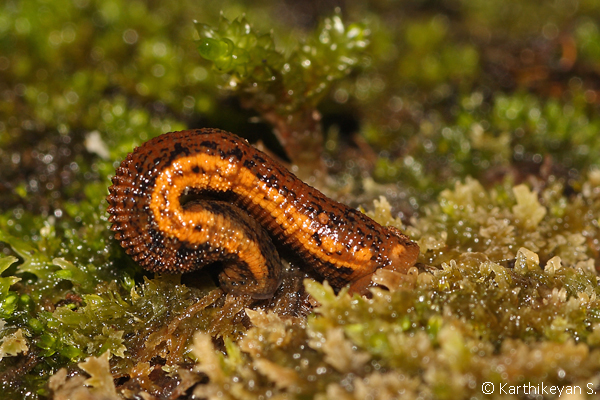 These little creatures don’t waste any time either; they become active with the first rains of the monsoon. A keen observer would probably notice the little leech sitting on low vegetation as it tries to sense your presence in hope of clinging on to you for a meal of blood. However, often it is only when get out of your shoes that you realize that some of these slimy leeches have managed to even get through your socks to satisfy their hunger.
These little creatures don’t waste any time either; they become active with the first rains of the monsoon. A keen observer would probably notice the little leech sitting on low vegetation as it tries to sense your presence in hope of clinging on to you for a meal of blood. However, often it is only when get out of your shoes that you realize that some of these slimy leeches have managed to even get through your socks to satisfy their hunger.
More noticeable though is the hammer-headed worm. It is easily identified by its very characteristic form. These worms leave behind a glistening slime trail as they move about on the vegetation. What is more, these are predators and are out to make a meal of snails and their ilk.
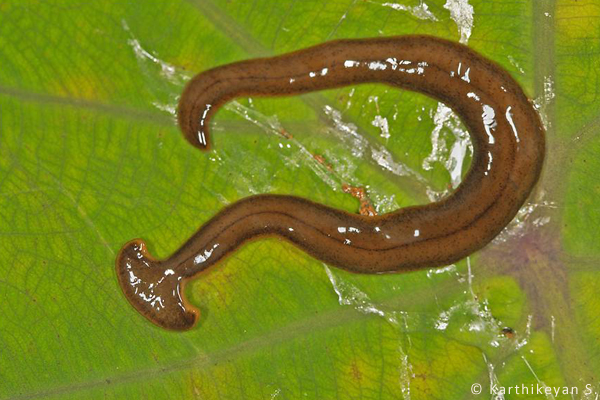
Snails that spend the hot dry months hiding, come out in good numbers during the monsoons months. One species that is very special is the large, colourful and charismatic Indrella ampula. This beautiful snail is an endemic of the Western Ghats where it is seen on the forest floor.
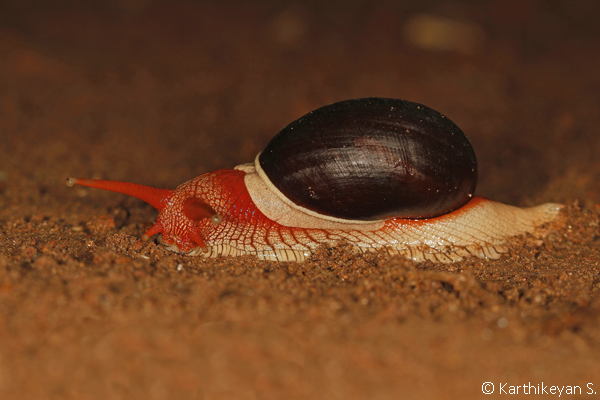
Here it shares the space with the millipedes. These ancient arthropods can be seen moving about, seemingly, at leisure on the forest floor. The millipedes largely feed on decaying organic matter. The manner in which many millipedes form a coil when disturbed, may be familiar to many of us.
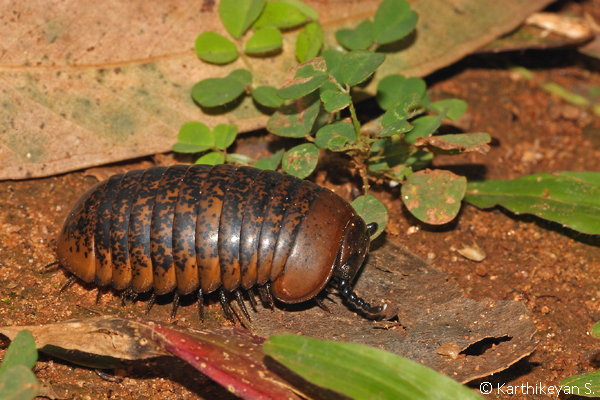
In the forests, during the rainy season, while looking at snails and millipedes, one could also stumble upon snakes – particularly the shieldtails. These are non-venomous snakes. They are particularly visible during the wet season as they come out of their burrows to the surface. They are best seen in areas with good leaf litter.
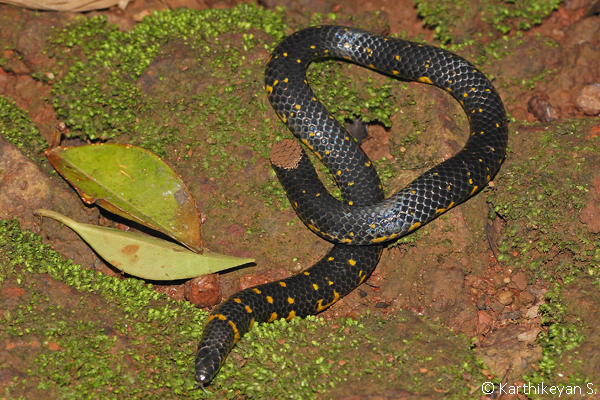
All the leaf litter and other organic matter also support a plethora of plants in these forests. In these wet forests, Impatiens are particularly noticeable near water, road sides, mud banks and other situations. They add colour to the otherwise dull forest floor. Most can be seen through the rainy months after which they wilt away, only to be seen with the onset of the monsoon the following year.
Many a time, a variety of moss, Impatiens, Utricularia sp, and Eriocaulon sp. are also seen alongside the Impatiens. A whole array of different species of ferns occupy different niches in the forest. Many grow on the forest floor while others perch pretty atop trees.
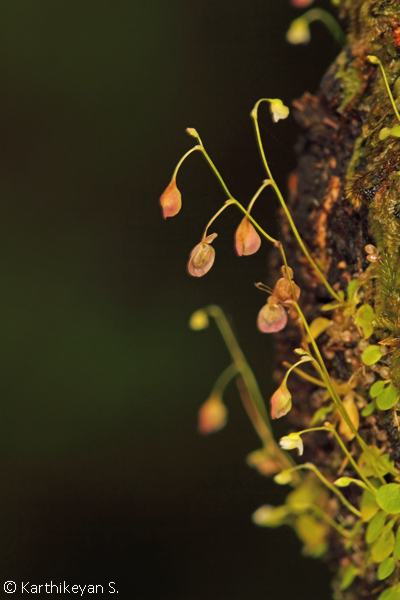
This monsoon, when you are in the outdoors, keep your eyes open for these and other life forms; else you will end up waiting for a whole year to see them in action again!
The above article is also published in the July 2017 edition of Pollachi Papyrus.